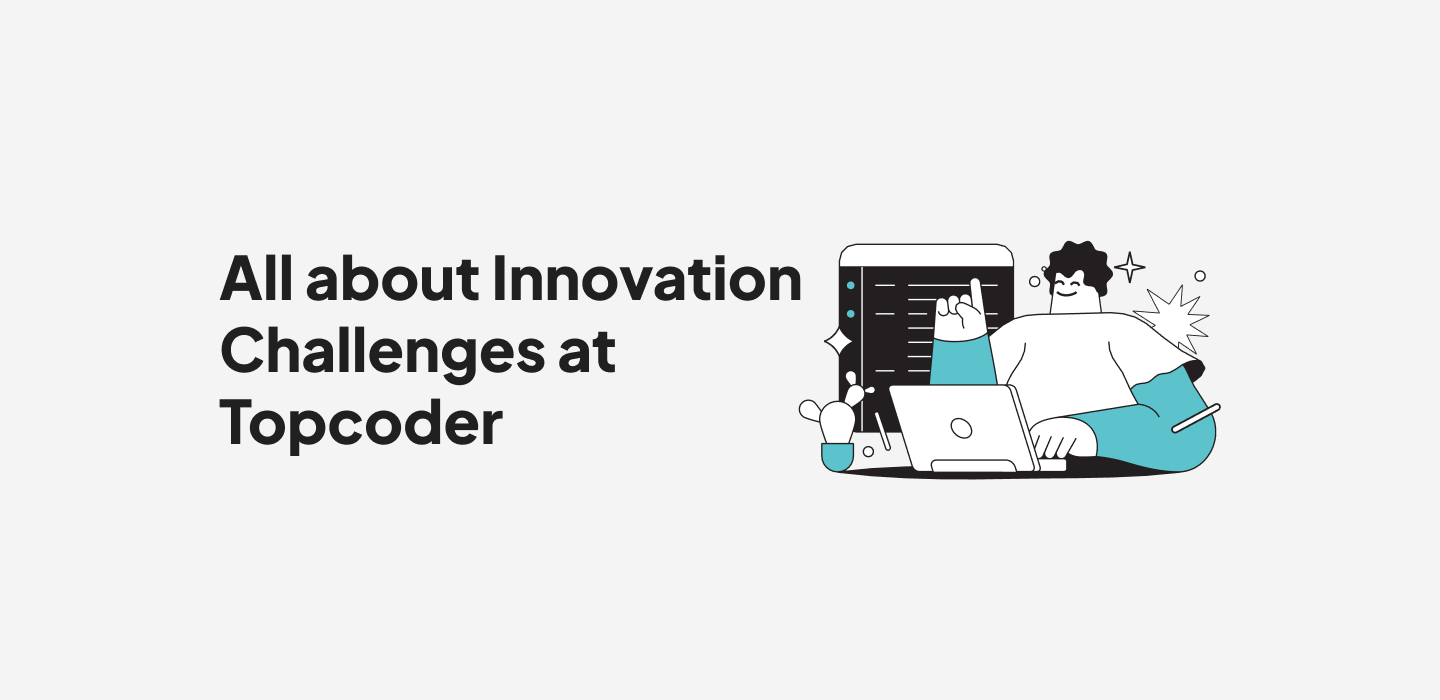August 2, 2021 How to Make a World-Class Commercial Without an Agency
Plot twist. As Topcoder’s head content creator, I usually write these blog posts. Today, the tables have turned. (Actually they turn a full 360 degrees because I’m still writing this blog post, but stay with me.) Our weekly Uprisor podcast series usually features one-on-one conversations between Topcoder VP Clinton Bonner and future of work thought leaders. In this episode, I become the interviewer.
The topic: a recent live action commercial Topcoder made with the talent from Tongal. I asked Clinton and Topcoder’s Creative Director, Trevor Gerring, what it was like to make a traditional commercial in a non-traditional way. Enjoy the conversation, and make sure to check out the finished product, below.
ABOUT TONGAL
Tongal is a creative community focused on video—everything from the script writing to the filming to the editing. They use a crowdsource model and the finished products they create are simply amazing. And it’s done all through distributed networks of these creators they have on their platform.
Q: What was the genesis for the video?
TG: Talent as a Service is Topcoder’s direct-to-freelancer offering. We’ve done a fair amount of motion graphics-type commercials in the past, and thought this was a perfect opportunity to mix things up, and do something that you would see on YouTube or Hulu or whatnot. I don’t think we’ve ever done a legit live action commercial for Topcoder in 20 years, which is kind of cool.
Q: Where did the concept come from?
TG: Clinton worked up a first rev script, and kind of the initial concept idea. That kind of set us off to the races.
Q: What made you decide to use Tongal?
CB: We were looking at quotes and ideas of what it would take from a traditional entity or agency to do it, versus Tongal. It was, at the end of the day, about somewhere between a quarter to maybe one sixth the price point that we were quoted, from Tongal. And the experience of working with them was really strong too. So we said, ‘Absolutely. You’re the team for us.'”
Q: Working with Tongal meant that you wouldn’t know exactly who you were working with some of the time. Was that a big concern?
TG: Yeah, that was definitely a big concern. For me, pre Topcoder, I come from the agency world. It’s very much a hands-on process. You know exactly who you’re going with. You have legit pre-production calls. Everything is mapped out, and things are vetted. Based on the other brands Tongal works with, I definitely wasn’t worried about the executional piece, it was more of the process around it. “How much do we need to let go? How much do we just trust them? ” It’s a lot of the things that we talk about with our customers at Topcoder, too. It was kind of eye-opening. I think what made it so trustworthy, and the process works so well for someone like myself, is that Tongal does do an amazing job of augmenting a normal production process through a virtual experience.
Q: What was the actual process of making the video like?
TG: After we sent over our script, our storyboard, and pre-production on our end, that kicked off their process. They put out a project spec. And they came back to us with, I think, five or six different directors. And then Tommy (our project manager) narrowed it down to, “These are the top three. These, I think, are your best bet, to get what you want.” And then, we force ranked them. Our director that we went with rose to the top super early. He comes from a very cinematic, very very polished look and feel for how he produces commercials. Which was exactly what we were looking for.
Q: Can you speak to what collaborating was like?
CB: There was tons of collaboration. Where are we going to shoot? What’s the wardrobe going to look like? Who are we going to cast here, and why? All that was really smooth, from a technology standpoint. We looked at virtual portfolios, and videos.
The script became the thing where we had to give the sharpest feedback. We had to be comfortable saying, “Hey, we’re not there yet.” The director was great, because he was able to take that feedback and understand where it was still missing. Take what we were thinking and come back to us. So we literally compromised, but in a really strong way.
Q: How long did it take from start to finish, from idea to final product?
TG: Right around three-ish months. I was expecting that we were going to need at least six months, because I’m stuck still in traditional production world, where it’s like, “Yeah, you want a commercial? Next year, I guess.” This was super efficient and extremely fast for what we got.
Q: What surprised you the most about the process?
TG: One was the actual process. That alone, I think was the biggest thing that changed my perception of how can you actually produce this work in this way. And then, the other was just the sheer quality. From the first time we got those director recommendations, to see the thought, and the level of understanding right off the bat was super impressive. For me, I was not expecting that.
CB: Yeah. I love that. And, just all the way through, every single turn, every time the director got the next iteration, I was able to find a nugget or two of an expression, a look, a feel, where I was just like, “Wow. They just absolutely kept crushing it all the way through.”
The director got it, and then all the way down the line, each individual contributor was overly impressive. And again, for the timeline, and the budget, and this happening virtually still in the middle of COVID. It just all added up to being a tremendous amount of value delivered, period. That’s it, just so much value delivered.
Annika Nagy



